A trip to Catalonia... (Barcelona, Tarragona, Reus, Cambrils, Tortosa)
I’d been selected to work at a summer camp in a region of Spain (worth mentioning an apology in advance here to any stern Catalans reading this who don’t identify themselves as Spanish) on the Southern coast of the region of Catalonia.
The contract lasted for five weeks and I’d be based in an area known as Cambrils, about 100km south of Barcelona. I took the offer, seeing it not only as another good opportunity to get back into teaching, but also as a way of traveling around Europe a bit more.
I secured the job through a website called ESL Employment and worked for a local academy called Hopscotch Anglés (English spelt the Catalan way, not Spanish! ) As I’d similarly done whilst teaching in Taiwan, I managed to secure a language exchange partner through the website My Language Exchange to practice my 'muy limitado nivel de español' (very limited level of Spanish! )
I arrived in Reus airport and took a taxi costing a whopping €35 to Cambrils, which was practically the cost of the flight. Upon arriving in Cambrils it was obvious that this was a fairly touristic region and it was clear to see why.
The village is located on the coast next to a beautiful beach and the weather, for virtually my entire time there - bar the odd bit of drizzle - was nothing short of glorious.
On the fist night I visited an incredible Thai Restaurant called Prick Thai, the rest of my time in Cambrils was spent either at the beach or walking down the local streets gazing at the architecture of the old village or pueblo antiguo as its called in Spanish.
Every Wednesday there is a local organic food market, which sells freshly grown home fruit, vegetables, herbs and spices for a tiny cost. The market opens early and closes about 2pm (a lot of places in Catalonia close between 1-4pm as this is Siesta time! )
Some of the local cuisine in Catalonia includes Pan con tomate (bread with tomato), patatas bravas, salsa and of course tapas.
Catalans have a very proud culture and won’t appreciate it if you refer to Catalan as a dialect of Spanish; the two are both Latin based languages in their own right.
There was a lot happening politically in Catalonia during my stay there with a referendum on independence currently at the forefront of local’s political mindset. I felt this most whilst in Reus and Barcelona, where you’ll find a Catalan flag hanging out of the window on practically every other street. At one point during my stay, I came across a wall in Cambrils spray prainted with the words, in English: Catalonia is not Spain. You can make of that what you will...
Barcelona
I was eager to head to the capital city of (the region of) Catalonia: Barcelona. The train ticket from Cambrils cost me €9. 50 for a ride which took roughly 1 hr. 30 mins to Barcelona Sants Station. Sants is the main train station in Barcelona and is easily accessible to the airport; it is only 18 minutes by train to get there with trains running as frequently as every 30 minutes, usually leaving from platform 9 or 10.
When you arrive there you can buy a ticket for the underground at one of the many ticket machines or staff vender stations. Virtually all metro lines cross through Sants so wherever in Barcelona you want to go you shouldn’t have an issue. One great metro money saving tip is to get a 10 trip pass for 10 euros. Me and my friend Germain shared the same card and went on 5 trips on the metro for only 5 euros each!
Finding a cheap place to stay in Barcelona can be tough. I’d trawled through Couchsurfing to try and find a host to no avail. Every host I spoke to seemed to be fully booked for the next month (perhaps because I was there during the heavy tourist period of July).
I came across a hostel called Arc House, named as such because of its proximity to the Arc de Trimofe. The place cost me €40 for one night (it as on a weekend). This was the price for a standard shared, mixed dorm, which seemed extortionate but was pretty much the going rate for the city. The only plus side of the price was thee inclusion of a kitchen, which meant that if you were frugal enough, you could pop to a local Mercadona (the best and possibly cheapest supermarket in Spain), do a bit of a shopping and have your breakfast/lunch/dinner at the hostel, which I witnessed many other residents do!
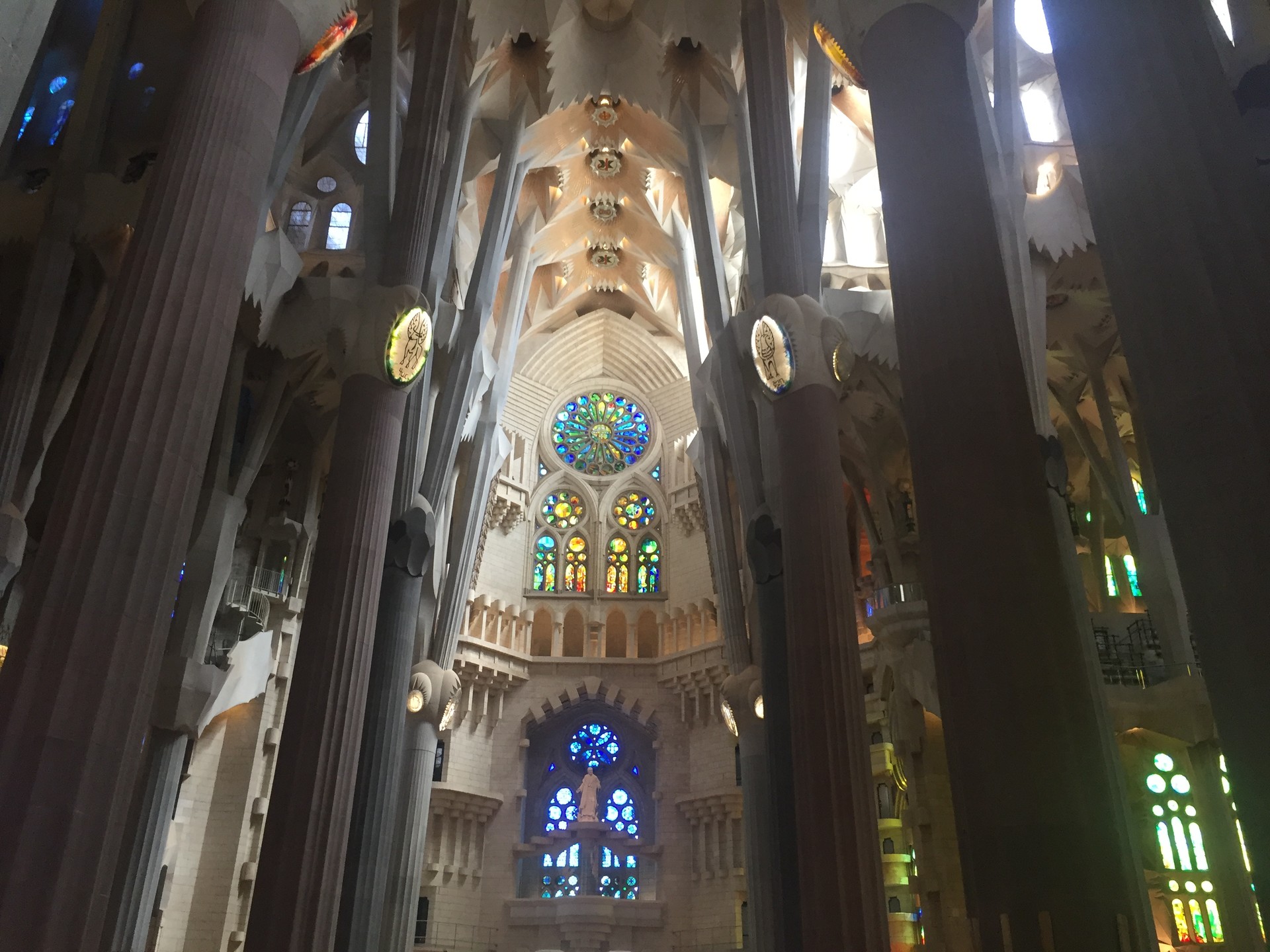
The first place on my to-visit list was arguably the most renowned and famous piece of Gaudi’s still incomplete work: La Sagrada Familia in Barcelona. Basic tickets to go inside the cathedral cost €15 (only €13 for students) but be warned, you’d be best to book online at least a day in advance to avoid disappointment.
Also, don’t be surprised to find parts of the building still under construction as because Gaudi was such a visionary, his ideas were simply too advanced for architecture technology during his time, meaning the building is currently set to be complete in 2026. Gaudi, being the genius that he was, foresaw the inventions of new building technologies, which would enable his dreams to one day become a reality. In addition to the main cathedral you can also visit the Crypt, which is at the back entrance of the building next to the park. It’s free to visit for everyone, or at least it was for us - possibly because it was Sunday - and they host mass services here on Sundays. It is the official location where Gaudi’s body is buried.
Book tickets for La Sagrada Familia here.
Park Guelle is another piece of one of Gaudi’s most inspired works, which trails of tourists continually flock to see. We were told by a tour guide that the park is free to visit before 8am and after 8pm every day but if for some reason you can’t make these times, tickets can be bought in advance and are €7 if bought online or €8 on the door.
It is most famous for featuring a bench, which features either a dragon or a chameleon, depending on which way you wish to look at it. It is unknown exactly what the creature is Gaudi created, whether it is in fact a dragon, chameleon or some other form of reptile.
It is rumoured however that during Gaudi’s career, the wealthy bourgeoisie living in Barcelona at the time - such as Guelle who the park is named after himself - were fans of imports from other cultures such as Japanese art, and through their appreciation of both Japanese art and art noveu (modernism), funded what they deemed as worthy projects such as many of the buildings constructed by Gaudi.
Guelle funded Gaudi for anything and everything he wished to build, giving him total creative freedom. Gaudi himself became a close friend of Guelle’s but publically remained rather illusive about what exactly his projects symbolised.
Once key example of this is his last project built entirely from the ground up, the modernist La Pedrera, formally known as Casa Milà seen below. UNESCO recognized this building as World Heritage in 1984. The façade is an eclectic and beautiful collection of stonework that, accompanied by its forged iron balconies, exemplifies the peculiarities of the natural world, a theme which is prominent in Gaudi’s work. Some people speculate it represents waves of the ocean with seaweed entwined in it, keeping in theme with Gaudi’s fascination of Nature. Others say it is an eroded mountain. Judge for yourselves:
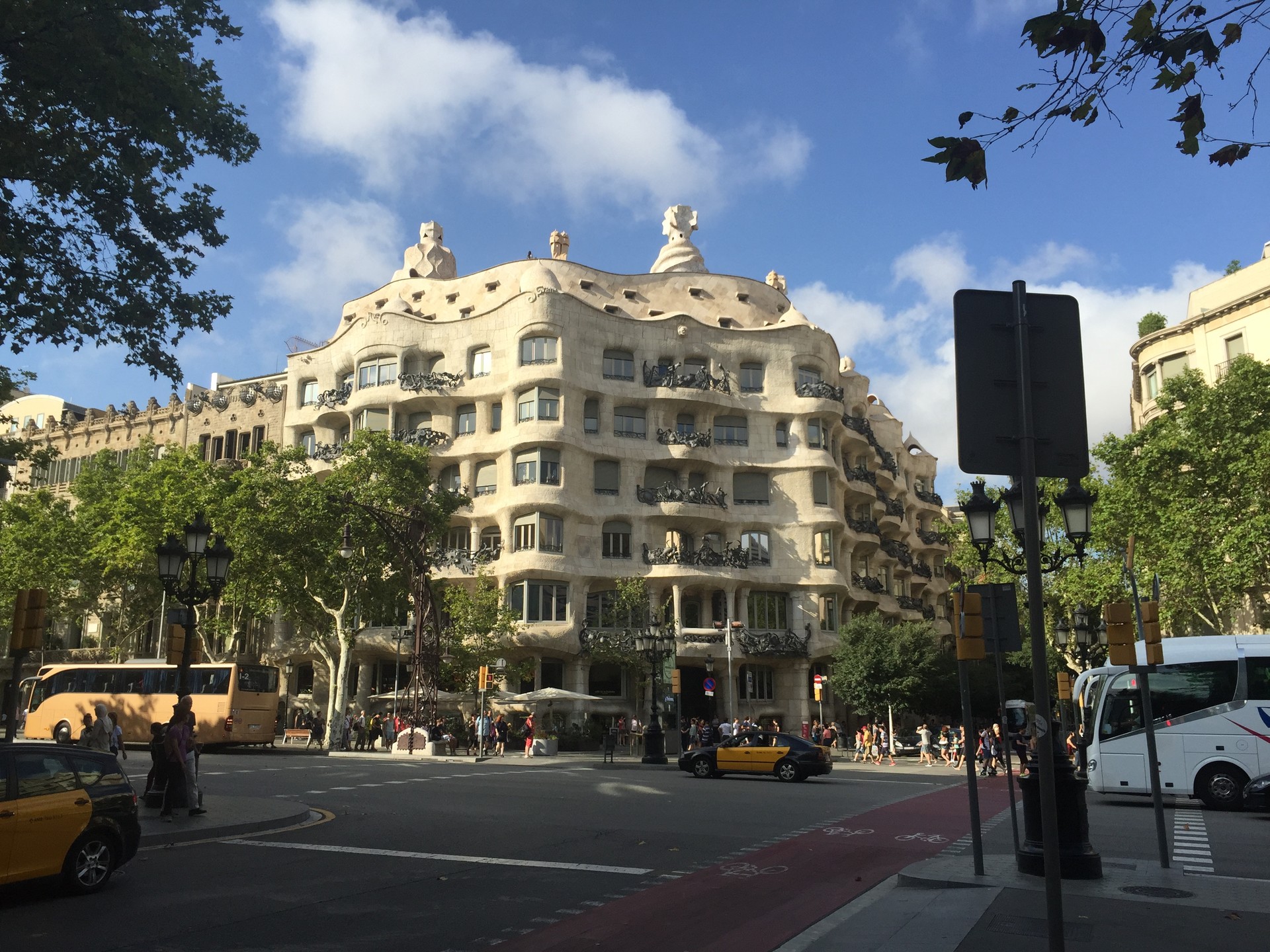
If you’re frugal and don’t want to spend any money at all on being a tourist, you can opt for the free walking tours of the Gothic quarter (Barrio Gotico) of the city, which leave at 11pm and 14:30pm daily from Plaça de Cataluña, which is on the metro line.
The only part of the deal is that if you feel the tour was worthy of a donation, you can make a donation of your own amount to your guide at the end of the tour. I got greedy and did three walking tours with three different groups.
The first of which left left at 14:30 and went around the Gothic Quarter, where we saw numerous pieces of architecture from both the Gothic and neo-Gothic periods, including Saint Eulalia cathedral, in possibly the most touristic region of the city: Barrio Gotico. The cathedral itself is free to visit inside every day before 12. 30 and after 18:00. There is however mass service on Sunday, which means tourist visits inside are limited on this day and usually cost €7.
This company also offers bike tours of the city, which leave at 10am every morning. You can rent a bike from Plaça De Cataluña.
You can also go on a free walking tour of Barcelona and sample Gaudi’s work every day at 10am and 16:30pm starting from Plaça Reial with a company called Runner Bean Walking Tours. The tour works on a donations only basis and finishes at La Sagrada Familia, widely recognized as Gaudi’s still yet-to-be-finished masterpiece. Unlike the other free walking tours, you will have to hop on the metro twice for this one and are expected to cover the costs of this yourself.
My personal favourite walking tour however was the “alternative tour” around the neigbourhood of Raval, known for Barcelona’s “darker” history of prostitution, drugs, absinthe and of course, the ubiquitous street art. There are pieces of art to be found daubed on the walls of practically every corner in this district, and despite the feeling that this is definitely not the most touristic region of Barcelona, there is a subtle charm to the apparent seediness which underlies this particular area. Around this are there are a few certain absinthe bars, which bore host to famous Barcelona residents such as Pablo Picasso and Earnest Hemingway, not all of which would be deemed entirely legal either by then or today’s standards...
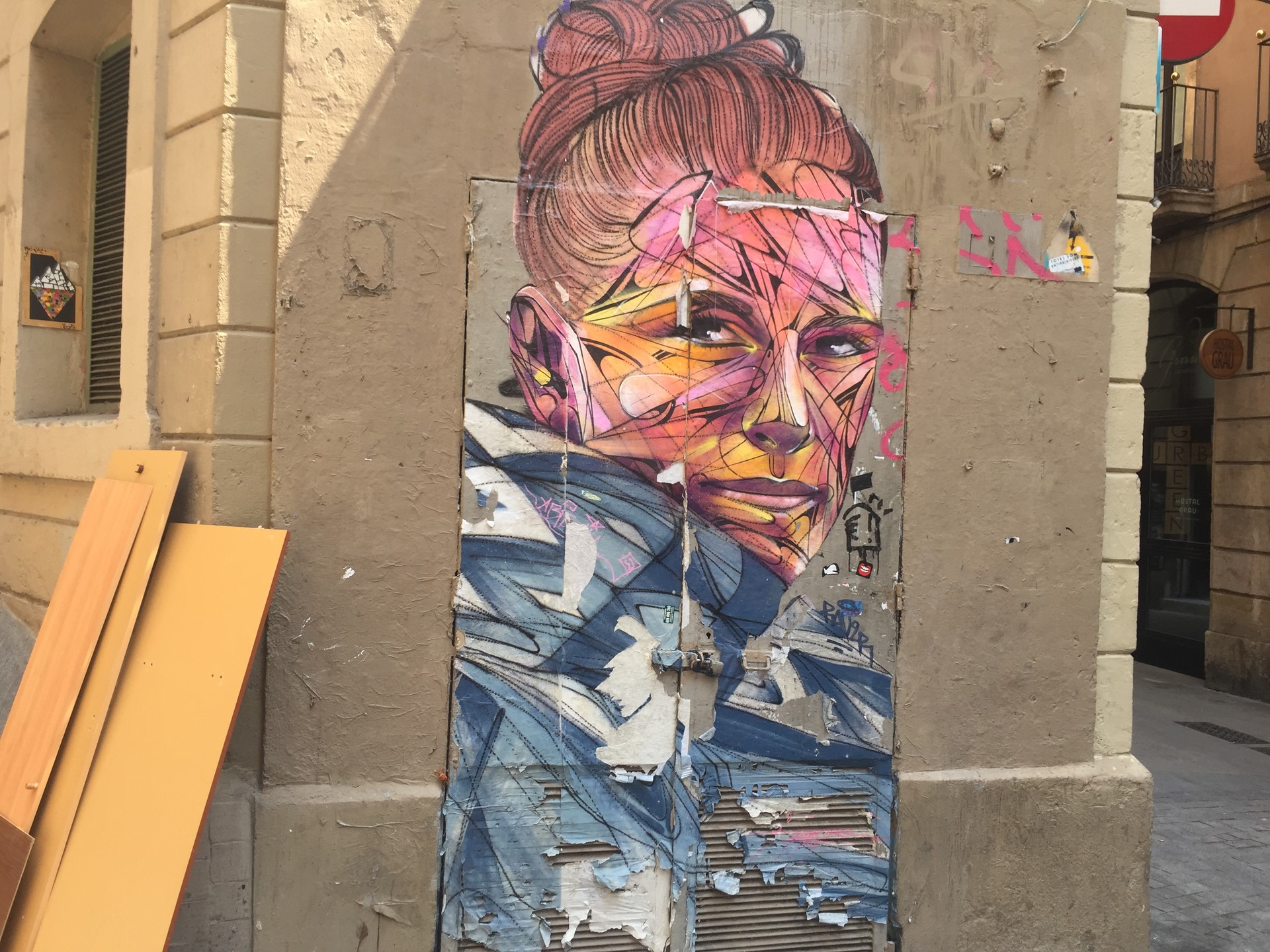
A quote about Raval from wiki:
“El Raval is a neighbourhood in the Ciutat Vella district of Barcelona, Catalonia, Spain. The area, especially the part closest to the port, was also informally known as Barri Xinès or Barrio Chino, meaning "Chinatown". El Raval is one of the two historical neighbourhoods that border La Rambla, the other being the Barri Gòtic, and contains some 50, 000 people.
An area historically infamous for its nightlife and cabarets, as well as prostitution and crime, El Raval has changed significantly in recent years and due to its central location has become a minor attraction of Barcelona. “
Street artists such as Lady Marmalade (pictured above), Juan Carlos and Dr Brainwash, Space Invader and The Black Pacifier heavily circulate their pieces across the region. The competition involved in this field of art is intensive, with artists painting over other artist’s work if they feel they can do a ‘better job’, or similarly if they believe an artist has sold out, something which happened to perhaps the most famous street artist of all time: the British born street artist and notorious Banksy. Two rather famous Banksy pieces once donned the streets of Raval, however following a deal where Banksy allegedly sold some of his pieces for profit, the paintings in Raval was subsequently replaced by other street artists as a reprimand for his apparent ‘selling out’.
Walking further around the neigbourhood, there are still the remnants of Raval’s reputation present, with prostitution lingering around the streets. Police circulate the area to try to catch any tourists silly enough to pay for their services in the middle of the street. In Barcelona however, there are always loopholes to these scenarios and we were told by our tour guide- at least that’s how I assure you we discovered – that you could pay for their services legally in a nearby bar. Similarly to the gothic quarter tour, this fascinating tour of Raval also begins at Plaça De Cataluña at 14:30pm every day.
It was interesting to hear the tales about this vibrant sector of Barcelona, which sits so close to the tourist dominated areas of El Gotico and the main "rambla" or avenue, situated adjacent to Plaça de Cataluña. At the last section of our tour, we were told the tale of Juan Andrés, a local man beaten to death by police officers for breaking up a fight between two youngsters. In his memory, street artists depicted the scene via art, commissioned in part by the leftist party of Catalan politics: the CUP. The officers in question were arrested and imprisoned for their offence, which was caught on video by the locals of Raval.
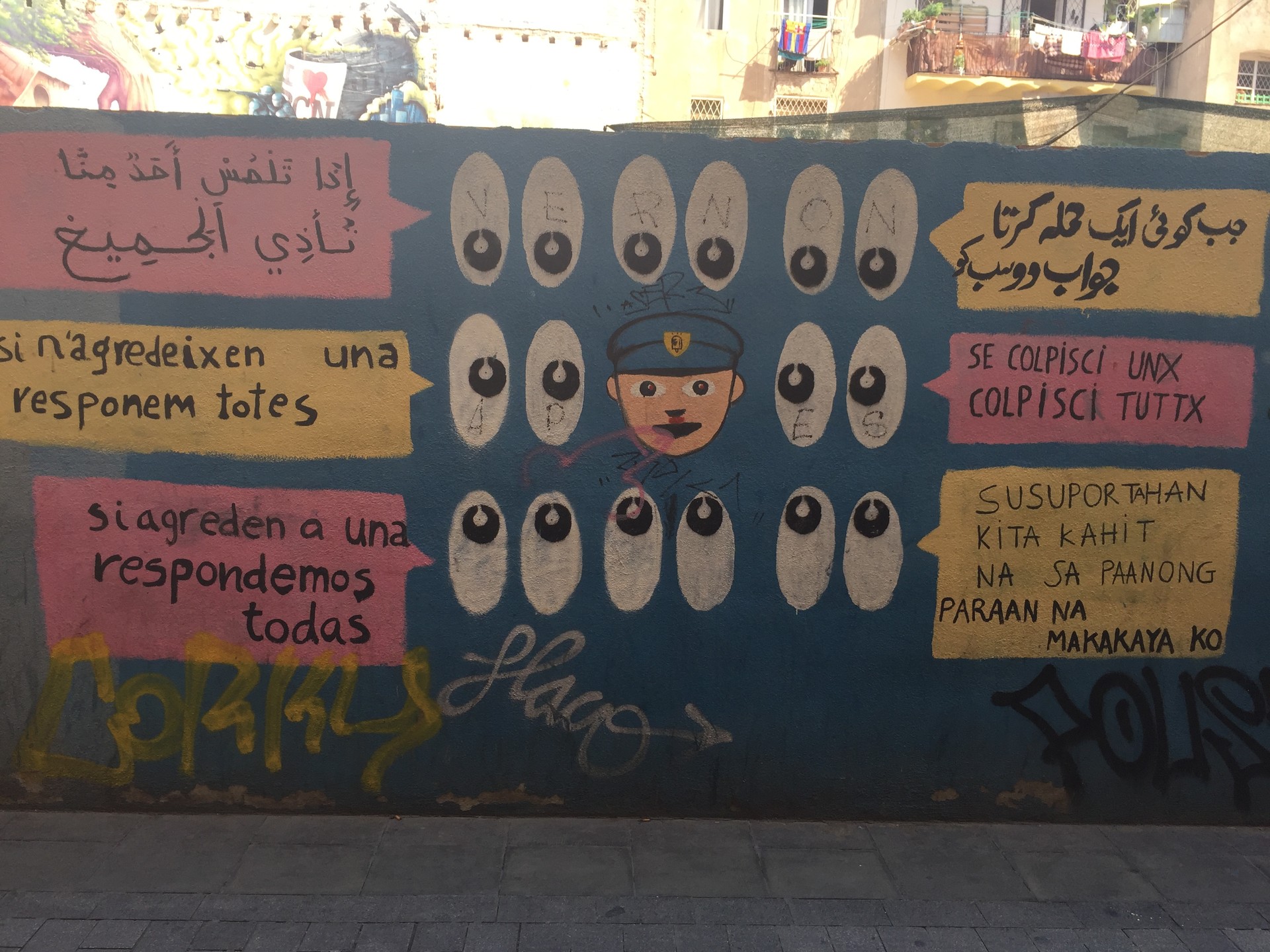
One thing you may be at times surprised to hear people asking you in the street asking if you’d like to ‘visit their coffee shop". This is not a euphemism and no, Barcelona isn’t quite as liberal, as say, Amsterdam yet. However, there is a law in Barcelona which means that the possession, and personal use of Marijuana on private property is permitted. There is a certain loophole, which allows coffee shop owners to “grow your weed for you”, resulting in you signing a declaration of your permission for them to do so and hey presto, you’ve got yourself a bag of weed, legally. If you’re interested in taking up this offer, you might also be interested in visiting the hash museum. I urge you to err on the side of caution however when buying weed, as although its legal to smoke on private property, that isn’t the case yet for public property. The police in Barcelona are known to be fairly lenient with certain laws to an extent, but that does not mean they sanction it. Always take care if drinking or smoking in a public place as you may well be fined. Or better yet, just don’t do either in public!
One other amazing place that I was lucky to stumble across was the museum at the back of a bookstore in the Gothic Quarter. The museum, called Museu d'Història de la Ciutat (MUHBA), Usually costs €7 to get in but on this particular day (Sunday) it happened to be free! I don’t believe they regularly allow free visits but nevertheless it would be worth the €7 even so. On the bottom floor you enter the ancient ruins of the Barcelona of the past, ruins roughly dating back to around 1AD. Lots of the signs are in Spanish or Catalan but most of the important ones are also in English. Inside there were remains of churches, the local “swimming” baths, statues of the heads of important male socialites of the ancient city, and also tombs of children.
Despite its at times apparent antiquity, Barcelona is becoming increasingly cosmopolitan. At times you may be mistaken for thinking you're in a much sunnier, slightly more continental region of London. In fact, last year it was the second most frequently visited city in Europe following only the British capital, beating Paris to second place. It is undoubtedly the 1992 Olympics, as well as the success of the football team, which has seen the upsurge in attraction to the capital in recent years. Prior to the Olympics, Barcelona had much less shopping districts than it does today - such as the notorious main ‘Rambla’ by Plaça De Cataluña - and was overall a much more industrial city. In fact the beach was only constructed in 1992 in aid of the Olympics and to promote tourism, replacing a local industrial port.
Watch out for pickpockets in Barcelona especially on the metro or while on the busy Rambla district. A friend and I witnessed a pickpocketing on the metro where the man was caught pickpocketing in the act. He was a middle-aged gentleman and blended in with everyone on the metro, so be careful, as these thieves can be fairly hard to detect. It's wise to try and keep your things either in your front pockets or ideally in a zip sealed bag on your front or in your sight at all times.
There are also some anti theft devices you can buy to keep stuff in.
Pick pocketing in Barcelona is serious business. It's a very safe city with a generally low crime rate but a particularly high petty crime rate. It is widely known for being the pickpocketing capital of Europe.
Catalonia, whilst indeed modestly sized, still offers many exciting places to visit other than Barcelona. Examples of such include Montserrat, a village nestled in the Catalonian Mountains, and Girona, both of which are situated in the North of the region. As I lived in such close proximity to South Catalonia however, I decided to check out the famous town of Tarragona as well as the not-so-famous, but equally interesting, village of Tortosa.
Reus
Within the first couple of weeks of being in Cambrils I was keen to get out and see neighboring areas of Catalonia. I visited the nearest city of ‘Reus’ (of which Cambrils is a suburb) home to famous Catalans such as the architect and local legend Antoni Gaudi as well as the artist Salvatore Dali.
Traveling to Reus from Cambrils is straightforward, with lots of busses leaving regularly with a company called Plana, who are located next to the beach. I bought a pass for 12 euros, which entitled me to 10 trips. Depending on which bus you get, it can take either roughly 30 minutes to get to or 50 minutes. The longer route goes through the heavily touristic region of Salou, which is full of Brits abroad soaking up the sun or sitting in one of the many Irish bars. The shorter one goes straight past the nearby amusement parks of Porta Ventura and Ferrari Land, arguably two of the best amusement parks in Europe.
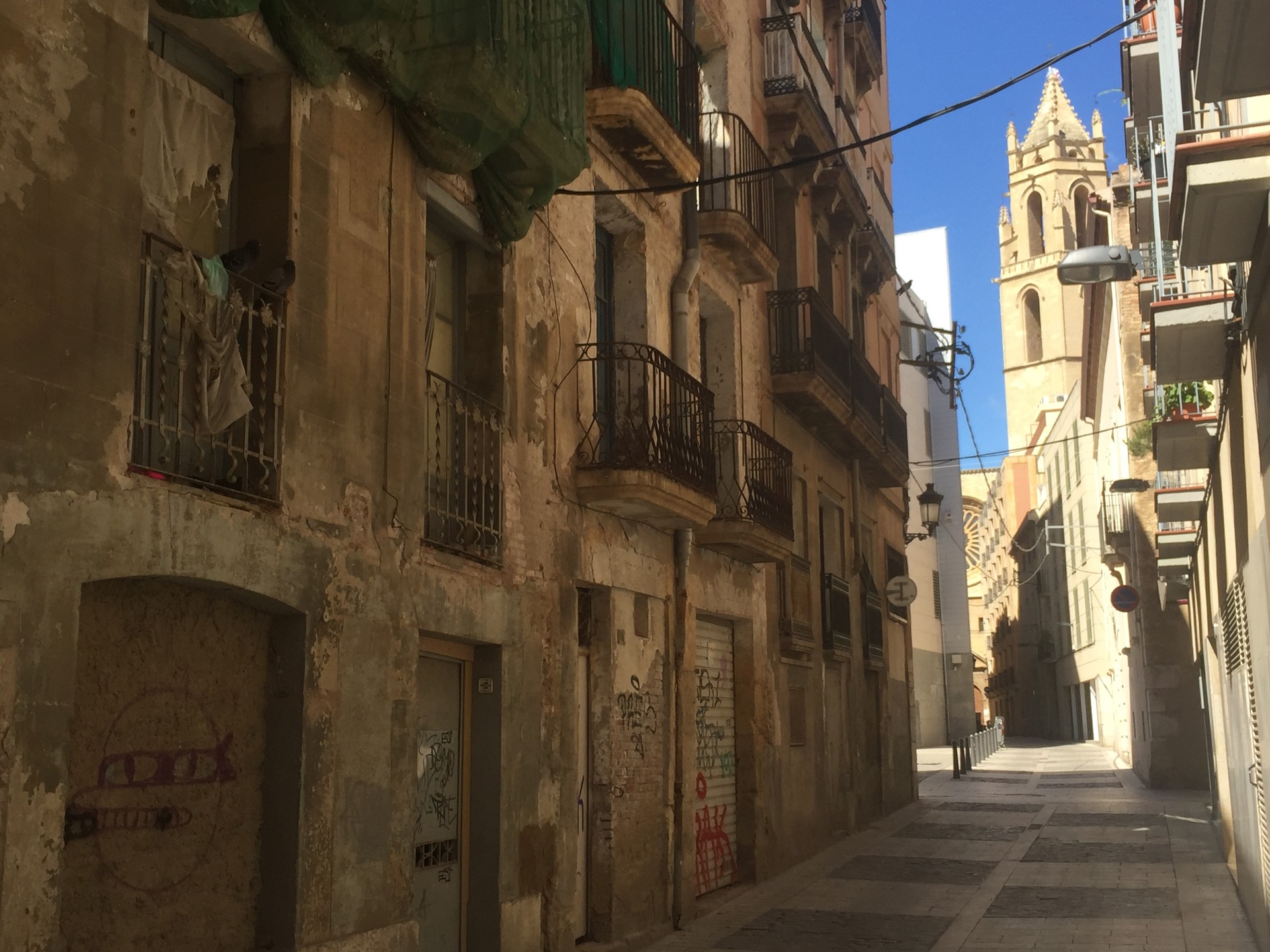
The streets of Reus are dazzling and it becomes quite clear both where Gaudi and Dali drew their inspiration from, and likewise how his style has shaped and influenced the city of his birth. You can pay €9 to visit the local Antoni Gaudi museum, which talks about his early years and how he tried to incorporate the aesthetics of nature into his work through various avant-garde and obscure procedures.
Tarragona
Upon arrival in Tarragona it’s clear to see why for quite a relatively small town, it attracts the still rather decent amount of tourists that it does (most of whom appeared to be French during my visit). Using the same bus pas I’d used to get to Reus from Cambrils, I used up another one of my 10 trips with the bus company ‘Plana’. The city is a town of ancient ruins, inhabited by the Romans in throughout the 1st Century AD and beyond. In the middle of the town is the Roman Amphitheater, which is situated less than 1km away from the ancient Circus, where gladiatorial spectacles were known to be held.
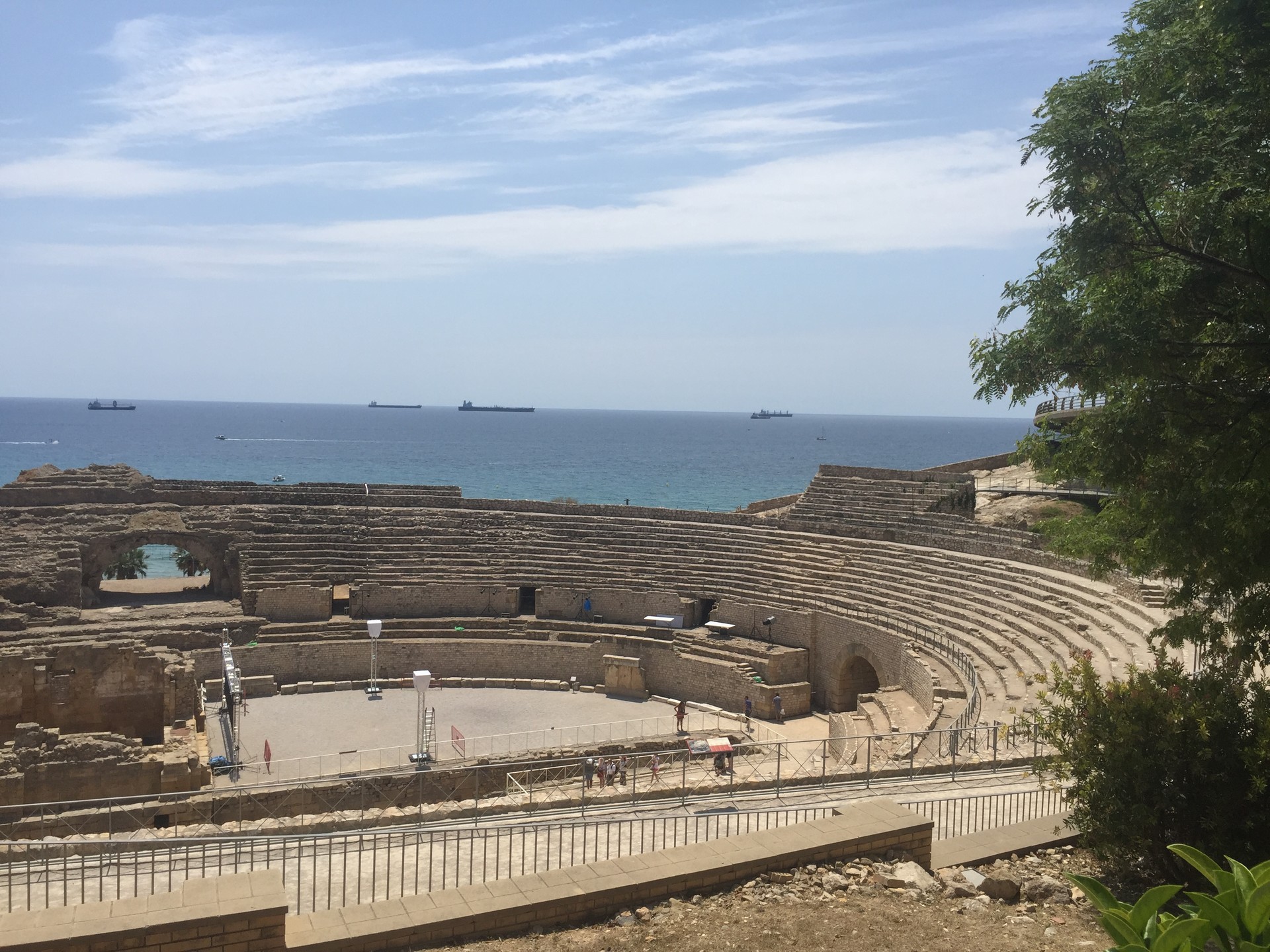
The cost of entry for students to the circus is €1. 70 or €3. 50 to go inside both the Circus and the Amphitheater. You can however see most of the Amphitheater from the outside without having to pay to get in.
Tarragona also boasts a beach, which runs across both the more cosmopolitan district as well as the “old town”, where most of the ruins are located as well as a stunning cathedral. It takes about an hour and 10 minutes to travel there by train from Barcelona and will cost you less than €9. 50.
Tortosa
Last but certainly not least is the beautiful village of Tortosa. Located in the far South of Catalonia and only a couple of hours away from major cities like Valencia and Barcelona, Tortosa really is a hidden gem of a place. A train ticket to Tortosa from Cambrils costs €7 or €10 from Barcelona Sants Main Station. Traveling from Barcelona it will take 2 hours but if you travel from Tarragona or Camrbils it will take less than an hour. It is most famous for its annual medieval festival, where locals and tourists alike flock annually to the food stalls and linger the streets to soak up the atmosphere. The medieval festival usually falls on a weekend around mid July every year.

Upon arrival in Tortosa there are three things which will immediately grab your attention: The cathedral, the river and the castle - all of which are equally beautiful and incredibly interesting. The cathedral and castle are both free to enter and are all within walking distance of one another. From the castle in particular you can catch some stunning views of the river Ebro Delta and the nearby Ports Mountains, visible from across the horizon. From the Castel de la Sud (Castle of the South) there are equally stunning views. There is however another cathedral located slightly outside the town centre, which ideally requires a bicycle or car to get to as it is a mostly uphill walk and would probably take at least an hour on foot. If you’re missing the coast, the nearest beach from Tortosa is Lampolla, which is either 20 minutes by car or 30 minutes by train.
For my last day in Catalonia, my Catalan friend Germain decided to take me hiking up Barrancs de la Caramella, which is about 15-25 minutes by car from Tortosa. It’s about a 45-minute hike and once you arrive near the top, you come to a beautiful crystal clear lake and waterfall, which by all means you can swim in (as we did! )
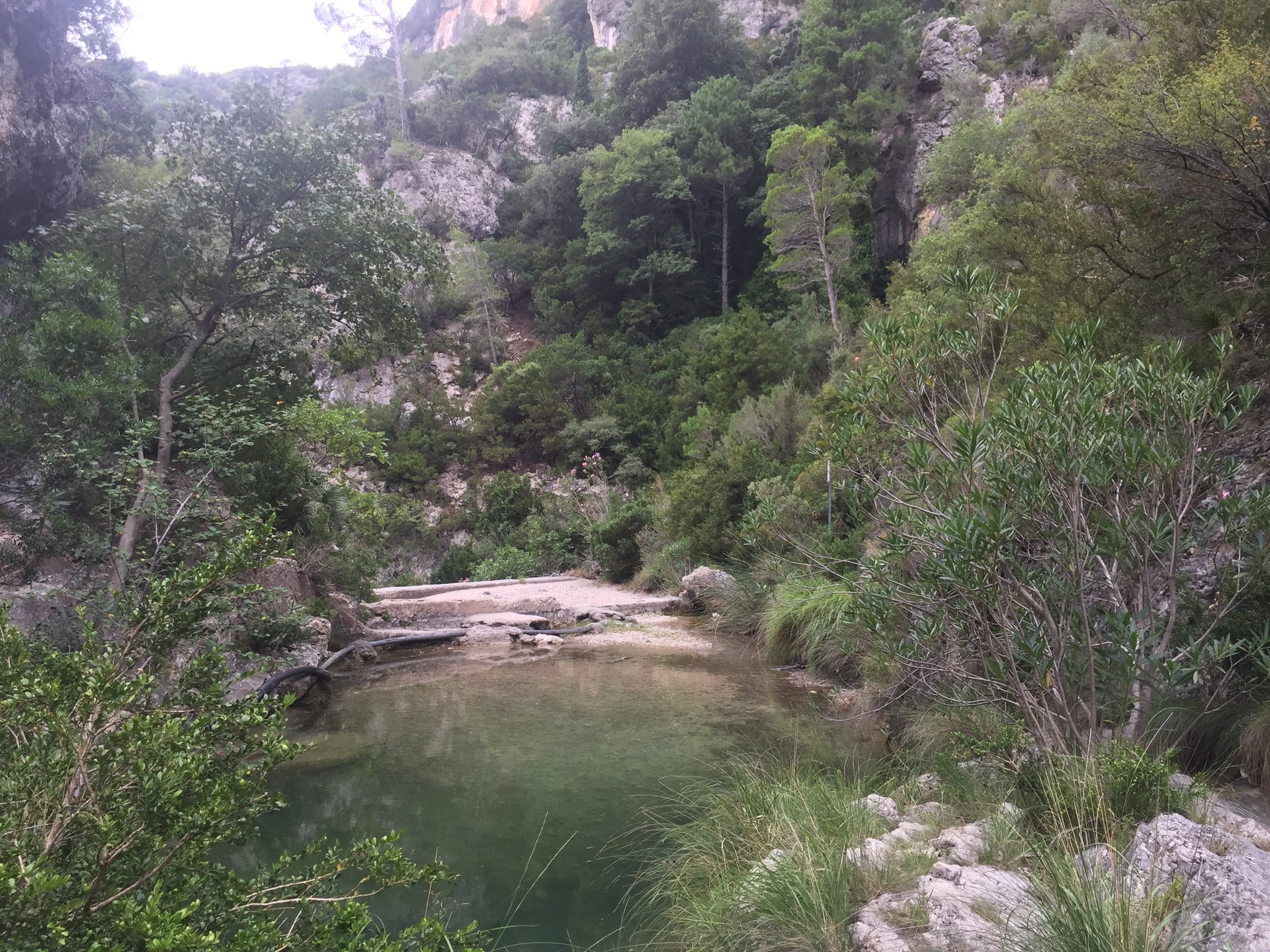
Fortunately we were able to drive there but renting a car could prove difficult in Tortosa. Renting a car in Barcelona, Valencia or Tarragona would be much simpler and I was quoted a price of €40 a day for a small 3-door car when I asked in Reus. Another option is an app called BlaBlaCar. It acts as sort of an official type of ‘hitchhiking’, where the driver sets a price for a journey and the “hitchers” agree to pay it upon meeting with the driver for the journey. The app is fairly popular in Spain and is certainly at least half the price of a Taxi or Über when public transport isn’t available. On one enquiry I found a driver going to Andorra from Reus, roughly a 200km drive, for €20 per person.
So here are my recommendations for (what I hope is) a thorough guide of Catalonia. One place I didn’t visit which if I do visit again I’ll look to include is Montserrat. However the Southern coast of Catalonia is indeed still a beautiful region in its own right, and with Montserrat being slightly over an hour from Barcelona by bus, it is another area which is easily accessible from the capital. It might seem odd to read Barcelona being a capital whilst it still remains in Spain and not as an independent state of Catalonia. Will this remain the case? Only time will tell…
Photo gallery
Content available in other languages
- Polski: Wycieczka do Catalonii...(Barcelona, Tarragona, Reus, Cambrils, Tortosa)
- Español: Un viaje a Cataluña... (Barcelona, Tarragona, Reus, Cambrils, Tortosa)
- Italiano: Un viaggio in Catalogna ... (Barcellona, Terragona, Reus, Cambrils, Tortosa)
- Français: Un voyage en Catalogne... (Barcelone, Tarragone, Reus, Cambrils, Tortosa)
Share your Erasmus Experience in Barcelona!
If you know Barcelona as native, traveler or as exchange student... share your opinion on Barcelona! Rate different characteristics and share your experience.
Add experience →

























Comments (0 comments)